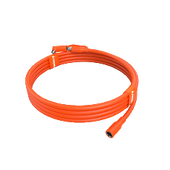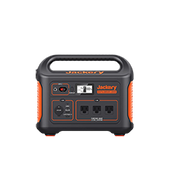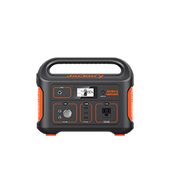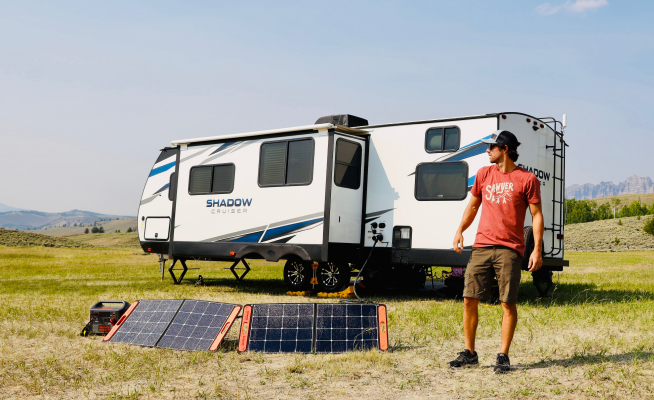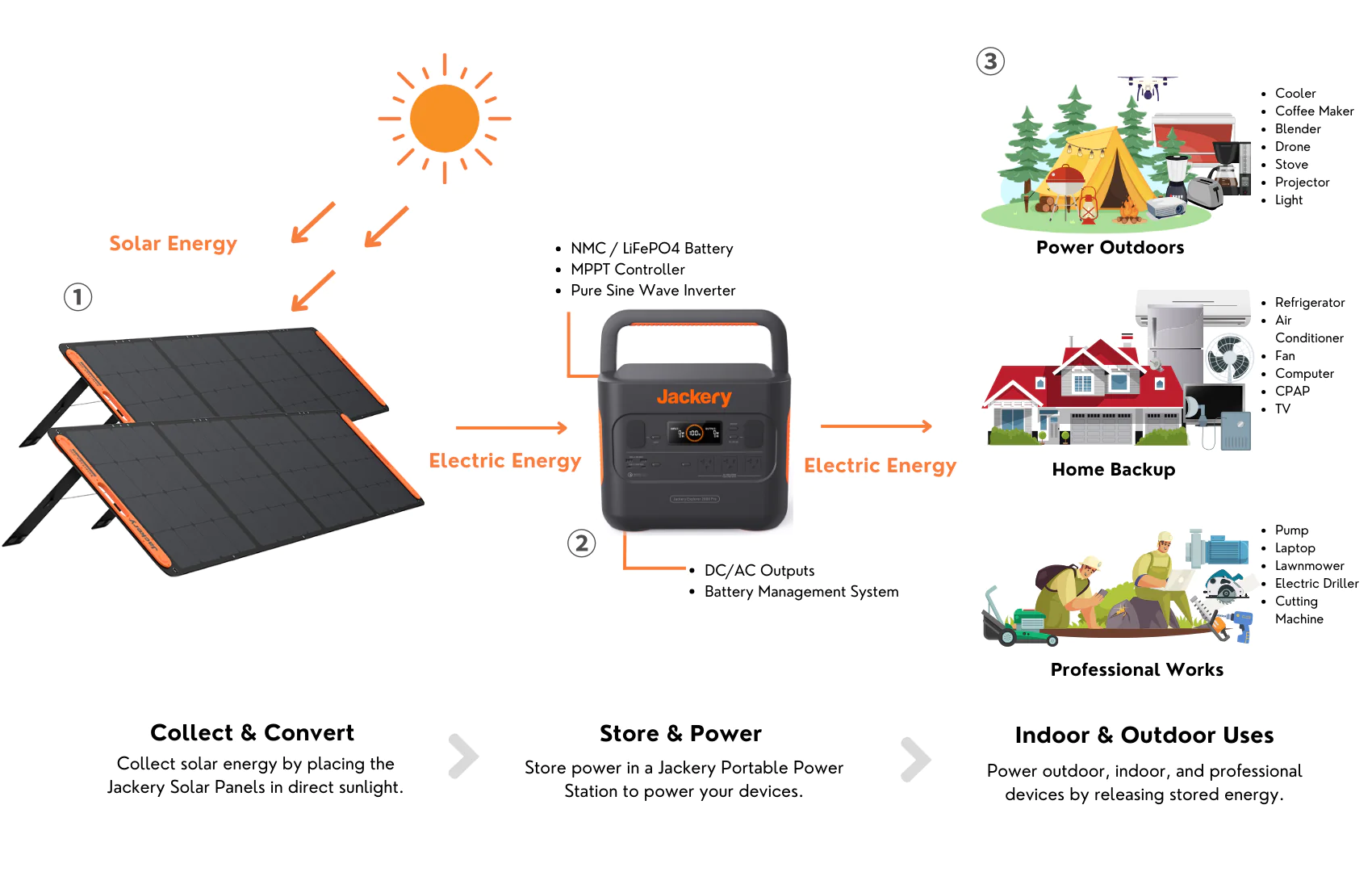Many studies focus on solar energy as a significant part of renewable energy sources. But our starting point should be to answer the fundamental question: How does solar energy work? The answer is straightforward: we need devices that convert sunlight into electricity. The energy coming from the sun can meet the energy needs of the entire planet in an endless cycle. Moreover, we can do this with zero waste and without causing environmental problems. This inquiry opens the gateway to understanding the profound significance of solar power in meeting global energy needs.
They are delving deeper into the query of how solar energy works and the environmental benefits and sustainability associated with this remarkable energy source come to light. Solar energy reduces dependence on fossil fuels, which are already running out. Renewable energy sources are advantageous because they are both environmentally friendly and unlimited. This dual emphasis on efficiency and environmental responsibility makes solar energy essential for a sustainable future.
While other economies are implementing their solar energy strategies, electricity generation with solar panels is rapidly becoming widespread in Canada. Embracing solar technology aligns seamlessly with Canada's commitment to clean energy and environmental stewardship. In recent years, we can see that green energy and sustainability are government policies in Canada. According to the plans, Canada aims to obtain the electricity needed from entirely sustainable sources, that is, to produce energy with zero waste, by 2035.

How Solar Energy Works: Unraveling the Wonders
In this segment, let's demystify the intricate process of solar energy – a phenomenon that hinges on the fascinating photovoltaic effect. At its core, solar energy is the radiant light and heat from the sun that is harnessed to produce electricity. Now, you might be wondering how does solar energy works exactly.
The magic begins with the photovoltaic effect, a pivotal aspect of solar power generation. Simply put, this effect involves the conversion of light into electricity using semiconductors. The process starts with sunlight containing photons, the basic units of light. These photons bombard the solar cell materials, such as silicon, triggering a chain reaction. And here comes the answer to the question of how does solar energy works: as photons collide with the solar cell, they displace electrons from their regular positions, creating an electric potential. This potential difference, or voltage, is the key to generating an electric current.
Generating an Electric with Photons
Exploring "How does solar power work?" unveils the transformation of sunlight into electricity, intricately orchestrated by the photovoltaic effect within solar cell materials. Now, let's delve into the details of this captivating process. Imagine sunlight hitting a solar cell in a solar panel. The photons from the sunlight strike the solar cell material, exciting the electrons within it.
Bringing this explanation closer to home, let's consider Jackery's involvement in this solar energy marvel. Jackery utilizes cutting-edge solar cell materials in its products, enhancing efficiency and ensuring optimal energy conversion. By incorporating high-quality materials like silicon in their solar cells, Jackery maximizes the absorption of photons, thereby improving the overall performance of their solar generators.
In Jackery products, the working of solar energy is seamlessly integrated to provide efficient and reliable power solutions. The process of how does solar energy works in Jackery products involves cutting-edge solar cell materials designed to maximize energy conversion. Jackery's portable power station utilizes advanced materials, such as high-quality silicon, to construct its solar cells. These materials play a pivotal role in the absorption of photons from sunlight.
Solar Cell Materials
The most essential components of solar cell materials typically revolve around semiconductor materials, with silicon being the most widely used. Silicon, in the form of wafers or thin films, is the foundation for capturing and converting sunlight into electricity. These semiconductor materials possess a specific bandgap that aligns with the solar spectrum, allowing them to absorb photons efficiently. Additionally, solar cell materials may include additional elements like Cadmium Telluride (CdTe) and Copper Indium Gallium Selenide (CIGS), which offer alternative approaches to harnessing solar energy.
Exploring Solar Cell Materials
To comprehend "how solar energy works," it is essential to explore the diverse materials employed in solar cells, with silicon, CdTe (Cadmium Telluride), and CIGS (Copper Indium Gallium Selenide) at the forefront. Silicon, a stalwart in the solar industry, provides stability and reliability. CdTe, an emerging thin-film technology, and CIGS, recognized for its efficiency in low-light conditions, contribute to the versatility of solar cell materials. This exploration unveils the intricate choices in designing solar cells, each material playing a distinct role in capturing and converting sunlight.
Characteristics Enabling Efficient Photon Absorption
A critical aspect of understanding "how does solar energy works" lies in dissecting the characteristics of solar cell materials that enable efficient photon absorption. With its optimal bandgap alignment, silicon ensures effective absorption across the solar spectrum. CdTe, boasting a direct bandgap, excels in converting sunlight into electricity. With its unique composition, CIGS demonstrates efficiency even in less-than-ideal lighting conditions. These characteristics collectively define solar cell materials' capability to harness photons' power and initiate the conversion process that produces electricity.
Manufacturing Processes: Bringing Solar Cells to Life
Delving into the manufacturing processes is integral to comprehending how does solar energy works in practical applications. For silicon-based cells, the Czochralski method takes center stage, involving silicon crystals' growth and precision slicing into wafers. In contrast, thin-film technologies like CdTe and CIGS undergo a distinct process. Layers of semiconductor materials are deposited onto a substrate, creating a flexible and efficient solar cell. Understanding these manufacturing intricacies unveils the careful engineering behind transforming raw materials into functional solar panels.
So, the journey into how does solar energy works begins with selecting materials that define solar cells' efficiency and capabilities. The characteristics of silicon, CdTe, and CIGS materials play a pivotal role in guiding the manufacturing processes that bring these materials together, paving the way for the sustainable conversion of sunlight into electricity.
Structure of Solar Panels
The structure of solar panels intricately weaves together various components, connections, and the prowess of semiconductors. This synergy is the key to unravelling "how solar energy works," as sunlight is efficiently captured, transformed, and transmitted to meet our diverse energy needs.
Breaking Down Solar Panel Components
Understanding "how does solar energy works" requires a comprehensive breakdown of the components constituting a solar panel system. Solar panels comprise various elements such as cells, sealants, glass, frames, and junction boxes. Solar cells, typically made of semiconductor materials like silicon, are the heart of the panel, responsible for capturing sunlight and initiating the energy conversion process. Sealants and glass protect against environmental elements, while frames offer structural support. Junction boxes play a crucial role in regulating the flow of electricity generated by the solar cells. This detailed breakdown unveils the synergy of components that transform sunlight into a usable electrical power source.
Connecting Solar Cells into Modules and Panels
Solar cells are strategically arranged and connected to form a module. Several modules are combined to create a solar panel. This interconnected network allows for the efficient absorption and transmission of solar energy. The strategic arrangement enhances the overall performance of the solar panel system, ensuring optimal utilization of sunlight and maximizing electricity generation. The meticulous connection of solar cells into modules and panels is pivotal in harnessing the collective power of the sun.
Semiconductors: The Powerhouse of Solar Energy Transmission
To truly grasp how does solar energy works, it is paramount to emphasize the importance of semiconductors in the absorption and transmission of solar energy within solar panels. Semiconductors, often made of materials like silicon, play a dual role. First, they absorb photons from sunlight, initiating the photovoltaic effect and generating an electric potential. Second, they facilitate the transmission of this generated electricity for practical use. This emphasis underscores the pivotal role of semiconductors as the powerhouse behind the seamless transformation of sunlight into electrical power.

Generating Usable Electricity
This section will delve into how solar energy transforms into usable electricity. From understanding the crucial role of inverters in conversion to exploring various connections and optimizing power with solar tracking, we're about to unveil the practical side of solar energy. Join us as we decode the simplicity and efficiency of solar power in real-world applications.
The Role of Inverters in Energy Conversion
To understand "how does solar energy works" in practical applications, exploring the role of inverters in the solar panel system is crucial. Solar inverters are pivotal in converting solar cells' direct current (DC) output into alternating current (AC), the standard form of electricity used in homes and businesses. This conversion is essential to make the electricity generated by solar panels compatible with the buildings' electrical systems and the broader grid. Understanding the intricacies of inverter functionality provides critical insight into the seamless transformation of solar-generated DC power into usable AC electricity.
Diverse Connectivity Options for Solar Panels
Examining how does solar energy works involves delving into how solar panels can be connected to cater to diverse energy needs. Solar panels can be integrated into buildings, serving as functional structures and energy generators. Connection to the grid allows excess energy to be fed back, contributing to the broader energy supply. Additionally, solar panels can be linked to batteries for energy storage, providing a reliable power source during periods of low sunlight. Exploring these connectivity options highlights the versatility of solar panels in addressing different energy requirements and integrating seamlessly into varied settings.
Enhancing Power Generation with Solar Tracking Systems
Optimizing power generation is a crucial aspect of how does solar energy works efficiently. Solar tracking systems represent a technological advancement in this pursuit. These systems enable solar panels to follow the sun's path throughout the day, ensuring maximum exposure to sunlight. By adjusting the tilt and orientation of the panels, solar tracking systems enhance energy capture, increasing overall efficiency. Understanding the integration of solar tracking systems into solar panel setups unveils a strategic approach to maximizing power generation. It underscores the continuous evolution of technologies to harness solar energy more effectively.
Powering Your Adventures with Jackery Solar Generators
Whether you're seeking portability, camping convenience, Overlanding endurance, or home backup reliability, Jackery's products go beyond the norm, ensuring access to clean, efficient, and superior solar-generated power for all your needs.
Let's explore the innovative Jackery solar generator systems, providing a comprehensive overview and tailored recommendations for various application scenarios.
1. Jackery Explorer 100 Plus Portable Power Station - Entry
Jackery Explorer 100 Plus Portable Power Station packs a big punch in a petite package, making it the perfect entry-level companion for power on the go.
- At just 99Wh with a 128W output, it provides just the right amount of juice for shorter adventures or basic emergency backup.
- The premium LFP battery technology offers 2,000 cycles for years of portable power.
- Safety features like advanced BMS protection provide peace of mind wherever you roam.
- Dual 100W USB-C PD ports enable rapid charging of small devices.
- Solar ready in just 2 hours for sustainable energy anywhere.
- With whisper-quiet and emission-free operation, it's ideal for indoor and outdoor use.
Covered by Jackery's 2-year satisfaction guarantee, the Jackery Explorer 100 Plus Portable Power Station gives you an affordable, worry-free entry point into the world of renewable, portable power.
 2. Jackery Solar Generator 300 Plus - Camping
2. Jackery Solar Generator 300 Plus - Camping
Jackery Solar Generator 300 Plus is a premium renewable power in a portable, camping-friendly form.
- Weighing just 11 lbs, the compact solar generator and book-sized foldable solar panels are set up and stowed with ease at campsites.
- Jackery's all-around safety system with 52 protective mechanisms and 12 BMS algorithms safeguards devices and batteries.
- Superior reliability is confirmed by FCC, CE, flame retardant and impact-resistant certifications.
- The included SolarSaga solar panel charges the unit in just 4 sunlight hours for endless sustainability.
- Monitor power levels and usage with Jackery's intuitive app via Wi-Fi or Bluetooth.
Jackery Solar Generator 300 Plus is purpose-built for powering camps under the stars. The advanced portable solar generator that won't weigh down your next backcountry adventure.

3. Jackery Solar Generator 1000 Plus - Overlanding
With robust power and ultimate versatility, the Jackery Solar Generator 1000 Plus is purpose-built for overlanding adventures.
- Its high 2,000W output and 4,000W surge capability efficiently run essential devices off-grid.
- Expandable with up to 3 add-on batteries for multi-day capacity up to 5kWh.
- Industry-leading sustainability verified by TÜV SÜD makes it eco-friendly for the backcountry.
- Rapid 2-hour solar recharge with 4 x 200W SolarSaga panels keeps you continuously powered up.
- The durable LiFePO4 battery withstands up to 4,000 cycles for 10+ years of reliable performance.
- Intelligent app control monitors usage and conditions via Wi-Fi/Bluetooth.
Jackery Solar Generator 1000 Plus is at home on any overlanding expedition. It is the ultimate power station for off-grid outdoor adventure.

4. Jackery Solar Generator 3000 Pro - Home Backup
With a robust 3024Wh capacity, the Jackery Solar Generator 3000 Pro provides reliable home backup power in emergencies and outages.
- Its ample battery storage can supply essential appliances to keep your home running.
- Ultra-fast solar charging in just 6-7.5 sunlight hours and rapid wall charging in 2.4 hours ensures continuous power.
- The portable design with a pull rod and wheels allows easy maneuvering during crises.
- Easily monitor status via Jackery's smart app for optimal control.
- Cold-resistant down to -20 °C /- 4°F and equipped with a quiet cooling system, it operates smoothly year-round.
- Advanced battery management technology safeguards energy storage and devices.
With ample capacity to energize homes and rapid recharge capabilities, the Jackery Solar Generator 3000 Pro is a reliable backup power station for households seeking energy independence and emergency preparedness.

Conclusion
We've walked through the fascinating journey of solar panel electricity generation, understanding how does solar energy works when sunlight transforms into a sustainable power source. Reflecting on the prospects of solar energy, the continuous improvements in photovoltaic cell efficiency open doors to a greener and more efficient future. We urge you to consider Jackery's solar generators for your diverse solar power needs. Our commitment to reliability and innovation ensures that whether you're embracing solar energy for home backup, camping adventures, or overlanding journeys, Jackery's solutions stand out.
By choosing Jackery, you contribute to a cleaner environment and gain access to dependable and efficient solar power, empowering you to embrace the limitless possibilities of sustainable energy. Join us in the solar revolution and experience the reliability of Jackery's solar generators firsthand.
Related Articles:









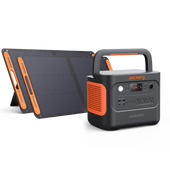

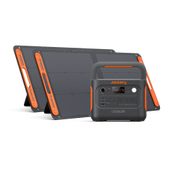
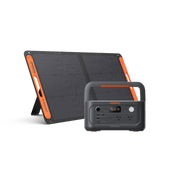
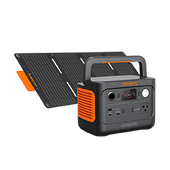


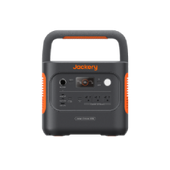
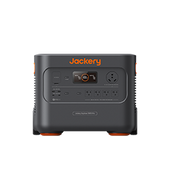
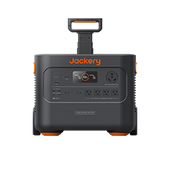

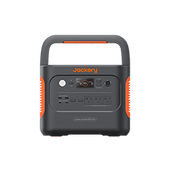
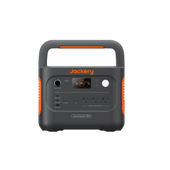
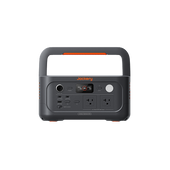

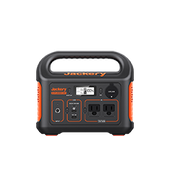
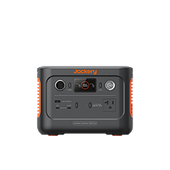

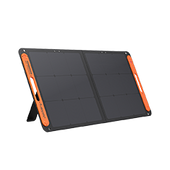


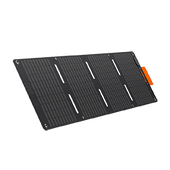
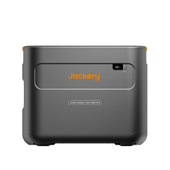
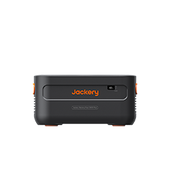
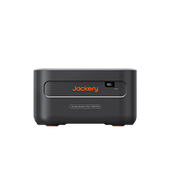
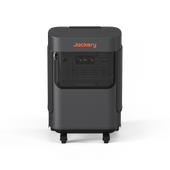


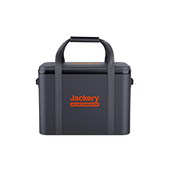
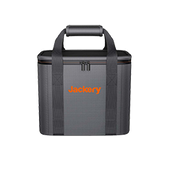
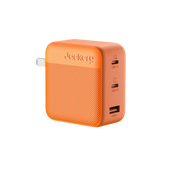
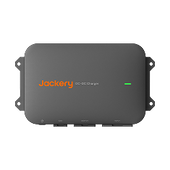
![[Add-on] Jackery Manual Transfer Switch for Explorer 5000 Plus](http://ca.jackery.com/cdn/shop/files/add-on-jackery-manual-transfer-switch-for-5000-plus-240V.webp?v=1757043692&width=170)
